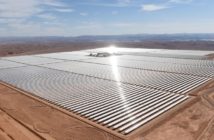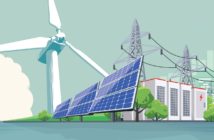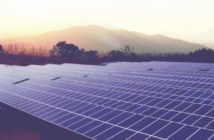
Villagers in Ethiopia’s arid north live as they have for centuries surrounded by cattle and donkeys; only the rows of towering white wind turbines look out of place.
It is not the first place one might expect to find the sleek new structures. The unpaved roads around the site are lined with donkey-drawn carts lugging firewood and bushels of wheat.
“It’s a little bit anachronistic to see the turbines in a rural zone where peasants are working like they were centuries ago,” says Gerard Damongeot of the French-run Ashegoda wind farm.
But, he says, it is “very, very windy” making it the perfect location for the turbines.
The path towards green power, however, is strewn with obstacles. The land taken up by the turbines was once used by local farmers.
Around 700 growers have lost either some or all of their land, according to the Ethiopian Electric Power Corporation (EEPCO) site manager Fisseha Gebremichael.
Local government provided compensation to affected farmers, but some say the payment was inadequate. “We are not happy, we had good income from this land,” said farmer Abraha Woldu.
He was given $4000 for his one hectare of land, which he said is not enough to lease another plot of land.
Like many Ethiopians, Abraha feels ambivalent about the wind farm. He welcomes progress, but is disappointed to have lost his main source of income.
“I am happy to develop my country, but I am not happy about the payment I received,” he said.
The Ashegoda wind farm, sub-Saharan Africa’s largest, is part of Ethiopia’s ambitious strategy to become the region’s leading producer of renewable energy.
The country is aiming for a seven-fold increase in renewable energy production in the next five years.
Ethiopia’s Prime Minster Meles Zenawi, the African Union’s special representative on the environment, pushed this month for countries to commit to green policies at UN climate talks in Durban, South Africa.
As part of Ethiopia’s ambitious $150 billion, 20-year green growth strategy, diesel power stations will be replaced by hydro, solar, geothermal and wind energy by 2015.
It’s a bold plan. More than half of all Ethiopians do not have access to electricity and critics say the scale of the plans is unfeasible.
And while the majority of power produced at Ashegoda and elsewhere will connect to the national grid, it is even hoped to produce surplus, with some 10 percent sold to neighbouring Djibouti, Kenya and Sudan, as well as to Egypt.
Run by France’s Vergnet Groupe, Ashegoda is the first of six planned wind farms in the country.
And of course, there is an abundance of wind, the result of a varied terrain and access to Red Sea winds from the east, with the company constructing two more plots of turbines by mid-2012.
But the company does not expect to turn a profit from Ashegoda due to escalating costs. The $282 million plan was financed by a loan from several French banks and the French development agency.
“We’ve lost a lot of money and we don’t expect to make any money,” Damongeot said, laughing.
But he maintains it is a good opportunity for the company to establish itself in Ethiopia, where they may expand into hydro projects in the future.
For the EEPCO’s Fisseha, renewable energy is a key investment for a developing country like Ethiopia. They can avoid the environmental damage seen in Western countries and boost exports at the same time, he said.
“Ethiopia is developing — and investing in such a way to be environmentally friendly and not make the mistakes of the developing world,” he said. “We are trying, we are trying hard,” he added.
Water and Energy Minister Alemayehu Tegenu is optimistic the effort will pay off in a matter of years.
“You’ll find that all Ethiopians will have access to electricity — you’ll find every industry has a good supply of green, renewable energy,” he said. “And wind farms everywhere, of course.”






